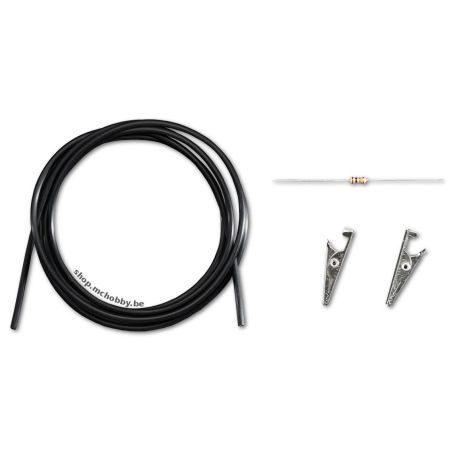Stretch sensors (1m) + Extra
Payments are secured by LyraCollect, a French payment collection company.
It is possible to delivered to your home, to a pick-up point or picked up by appointment at MCHobby
We prepare, pack and ship your orders with great respect and care.
Description
Measuring stretch forces isn't easy - unless you have some conductive rubber cord! This cord is 2mm diameter, and 1 meter long, made of carbon-black impregnated rubber. Usually this material is used for EMF gasketing, but its also very fun to play with.
In a 'relaxed' state, the resistance is about 350 ohms per inch. As you pull on it, the resistance increases (the particles get further apart). As you stretch it out, the resistance increases. So lets say you have a 6" piece - thats about 2.1 Kohms. Stretch it to 10" long and now it is 10"/6"*2.1K = 3.5 Kohms. You can stretch the rubber about 50-70% longer than the resting length, so a 6" piece shouldn't be stretched more than 10". Once the force is released, the rubber will shrink back, although its not very 'fast' and it takes a minute or two to revert to its original length. It's not a true linear sensor, and the resistance may vary from batch to batch, so we consider it a way to measure stretching motion but isn't really precise.
This stuff is fun, so we give you a full meter and also two alligator clips (to connect to the cord) and a 10K resistor. Together, you can use these to make a simple voltage divider. Then use our handy Thermistor tutorial to measure the analog voltage and convert that back to resistance.
Technical details
- Length: approximately 1 meter
- Diameter: 2mm
- Resistance: 140 - 160 ohms per centimeter
Contenu
We give you a full meter and also two alligator clips (to connect to the cord) and a 10K 1% resistor. Together,
Tutorial
- You can use these to make a simple voltage divider. Then use our handy photo-resistor tutorial to measure the analog voltage and convert that back to resistance. (MCHobby, French)





